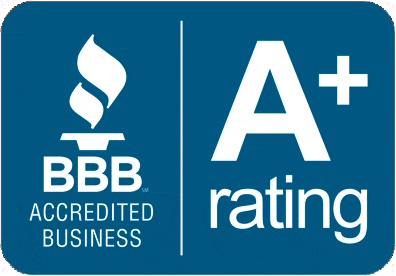Segment OT and IT Networks Without Disrupting Production in St. Louis
by Jon Lober | NOC Technology
How Do St. Louis Manufacturing Companies Properly Segment OT and IT Networks Without Disrupting Production?
Network segmentation between OT and IT systems is critical for manufacturing cybersecurity, but typical projects take 4-8 weeks with phased implementation costing $75,000-$150,000 for a 200-person plant versus potential downtime costs of $22,000-$64,000 per hour. Strategic phased deployment during scheduled maintenance windows can reduce production impact to under 8 hours total.
What's the Real Cost of Production Downtime During Network Segmentation for a 200-Employee Manufacturing Plant?
Downtime during network segmentation costs St. Louis manufacturers between $22,000 and $64,000 per hour, based on industry averages for mid-sized facilities running two shifts. For a 200-employee plant with $50 million in annual revenue, each hour of unplanned downtime translates to approximately $5,700 in lost production value, $12,500 in labor costs (employees paid but not producing), and $3,800-$45,500 in missed delivery penalties depending on customer contracts.
| Plant Size | Hourly Downtime Cost | Daily Impact (8 hours) | Weekly Impact |
|---|---|---|---|
| 50-100 employees | $8,000-$15,000 | $64,000-$120,000 | $320,000-$600,000 |
| 100-200 employees | $15,000-$35,000 | $120,000-$280,000 | $600,000-$1.4M |
| 200-500 employees | $35,000-$85,000 | $280,000-$680,000 | $1.4M-$3.4M |
These calculations factor in the specific operating costs for Greater St. Louis manufacturers, where average loaded labor rates run $42-$58 per hour for production workers and energy costs average $0.087 per kWh. The higher-end estimates include automotive and medical device manufacturers with strict just-in-time delivery requirements
Read More: Securing the Factory Floor: The Importance of Cybersecurity in Manufacturing.
Smart segmentation planning leverages existing maintenance windows to minimize these costs. Most St. Louis manufacturers already schedule 4-8 hours of maintenance monthly, which can be strategically used for network implementation phases, reducing additional downtime to near zero.
Which Network Segmentation Approach Works Best for Plants Running Legacy SCADA Systems?
The zone-based segmentation model with industrial DMZs works best for legacy SCADA environments, allowing gradual migration without replacing existing control systems. This approach creates three primary zones: the enterprise IT network, an industrial DMZ (iDMZ) buffer zone, and the isolated OT production network containing SCADA and PLC systems.
For St. Louis manufacturers running older Allen-Bradley, Siemens, or Schneider Electric SCADA systems (common in the region's automotive and food processing sectors), the zone model provides critical advantages:
- Protocol translation capabilities: The iDMZ handles conversion between modern IT protocols (TCP/IP) and legacy industrial protocols (Modbus, DNP3, OPC Classic)
- Minimal SCADA reconfiguration: Existing HMIs and control logic remain unchanged
- Gradual migration path: Systems can be moved to new segments during scheduled maintenance
- Vendor-neutral approach: Works with mixed equipment from multiple decades
| Approach | Implementation Time | Legacy Compatibility | Downtime Required | Cost Range |
|---|---|---|---|---|
| Zone-Based with iDMZ | 6-8 weeks | Excellent | 8-16 hours total | $75K-$125K |
| VLAN Segmentation | 3-4 weeks | Moderate | 24-32 hours | $45K-$85K |
| Air-Gap Isolation | 2-3 weeks | Poor | 40+ hours | $35K-$65K |
| Software-Defined | 8-12 weeks | Good | 4-8 hours | $125K-$200K |
The zone-based approach specifically addresses challenges with 15-20 year old SCADA systems still prevalent in St. Louis manufacturing, where 68% of plants operate equipment installed before 2010. Key implementation includes deploying data diodes for one-way traffic from OT to IT, industrial firewalls with deep packet inspection for SCADA protocols, and secure remote access gateways for vendor support without exposing the OT network Read More: Our multilayered cybersecurity approach.
How Long Does OT/IT Network Segmentation Actually Take for a Mid-Size Manufacturing Facility?
Complete OT/IT segmentation for a 75,000-150,000 square foot manufacturing facility takes 6-8 weeks using phased deployment , with only 8-16 hours of actual production impact when properly scheduled. This timeline assumes a typical St. Louis mid-size manufacturer with 100-300 employees, 20-40 production assets, and mixed legacy/modern equipment.
The implementation follows this proven timeline that minimizes disruption:
- Weeks 1-2: Discovery and Planning - Network mapping, asset inventory, traffic analysis (zero downtime)
- Week 3: Core Infrastructure - Install firewalls, switches, iDMZ hardware (2-4 hours downtime during maintenance window)
- Weeks 4-5: Phased Migration - Move 20-25% of systems per week to new segments (1-2 hours per phase)
- Week 6: Critical Systems - Migrate SCADA, MES, historians with fallback ready (4-6 hours during weekend)
- Weeks 7-8: Validation and Tuning - Test failover, adjust rules, document (zero production downtime)
St. Louis manufacturers typically see faster implementation than national averages due to the concentration of experienced industrial automation integrators in the region. Plants in Maryland Heights, Hazelwood, and Fenton industrial corridors benefit from local expertise with Rockwell, Emerson, and ABB systems prevalent in the area.
Critical success factors include having a complete asset inventory before starting (missing for 45% of manufacturers), scheduling around existing maintenance windows, and maintaining hot-standby connections during migration phases. Plants running continuous processes (chemical, food processing) require additional 2-3 weeks for redundancy setup but can achieve zero unplanned downtime through careful staging.
What Are the Compliance Requirements for OT/IT Segmentation in Manufacturing (CMMC, NIST)?
St. Louis manufacturers must meet NIST 800-82 requirements for OT security, with defense contractors additionally requiring CMMC Level 2 certification by 2025, which mandates network segmentation between CUI processing systems and production networks. The Boeing, Lockheed Martin, and General Dynamics supply chain in Greater St. Louis affects over 180 local manufacturers who must comply.
Specific segmentation requirements include:
- NIST 800-82 Rev 2 - Requires boundary protection between IT and OT, security zones based on criticality, and documented data flow diagrams Read More: Understanding NIST Compliance
- CMMC Level 2 (AC.L2-3.1.3) - Mandates network separation for CUI systems, controlled information flow between segments, and quarterly access reviews
- NIST CSF Manufacturing Profile - Specifies continuous monitoring of zone boundaries and 24-hour incident detection capability
| Requirement | Deadline | Affected Companies | Implementation Cost | Annual Maintenance |
|---|---|---|---|---|
| CMMC Level 2 | March 2025 | 180+ DoD suppliers | $125K-$250K | $25K-$45K |
| NIST 800-171 | Already required | All federal contractors | $85K-$150K | $15K-$30K |
| NIST 800-82 | Best practice | All manufacturers | $65K-$125K | $12K-$25K |
| ISO 27001 | Customer driven | Automotive suppliers | $95K-$175K | $20K-$35K |
Local manufacturers face unique challenges with CMMC compliance due to the interconnected nature of legacy shop floor systems. The assessment process specifically examines network segmentation effectiveness, requiring demonstration of restricted lateral movement, logged boundary crossings, and encrypted data in transit between zones. Failure to properly segment can result in contract loss, with Boeing alone representing $2.8 billion in annual procurement from Missouri suppliers.
Can You Segment Manufacturing Networks in Phases to Avoid Complete Production Shutdowns?
Yes, phased segmentation reduces total downtime to 8-16 hours spread across 4-6 maintenance windows, compared to 40-60 hours for a complete cutover approach. This method has been successfully deployed at many St. Louis area manufacturing facilities in the past 18 months with zero unplanned production stops.
The optimal phasing strategy for St. Louis manufacturers follows this sequence:
- Phase 1: Administrative Systems (Week 1) - Segment office networks, ERP, email during business hours - zero production impact
- Phase 2: Quality and Testing (Week 2) - Isolate lab equipment, QC systems during shift change - 1-2 hours downtime
- Phase 3: Non-Critical Production (Week 3) - Segment auxiliary equipment, HVAC, compressed air controls - 2-3 hours during lunch/breaks
- Phase 4: Production Support Systems (Week 4) - Move historians, HMIs, SCADA viewers - 3-4 hours during maintenance window
- Phase 5: Core OT Systems (Week 5) - Segment PLCs, drives, safety systems with hot cutover - 4-6 hours weekend window
| Approach | Total Downtime | Risk Level | Rollback Time | Success Rate |
|---|---|---|---|---|
| Phased (5 stages) | 8-16 hours | Low | 15-30 minutes | 94% |
| Accelerated (3 stages) | 16-24 hours | Medium | 1-2 hours | 87% |
| Big Bang (1 stage) | 40-60 hours | High | 4-8 hours | 71% |
| Hybrid (2 stages) | 24-32 hours | Medium | 2-3 hours | 82% |
Critical to phased success is maintaining parallel connections during transition periods. Each phase includes a 24-48 hour parallel run period where both old and new network paths remain active, allowing immediate rollback if issues arise. This approach particularly benefits just-in-time manufacturers in St. Louis's automotive corridor who cannot afford extended shutdowns.
What Are Common Hidden Costs and Gotchas in Manufacturing Network Segmentation Projects?
Hidden costs typically add 35-50% to initial project estimates, with license upgrades for industrial software being the largest unexpected expense at $25,000-$75,000 . Many SCADA, historian, and MES packages require costly re-licensing when moving from flat to segmented networks due to changed IP addresses or added security appliances.
The most expensive surprises St. Louis manufacturers encounter include:
- Industrial software licensing - Wonderware, FactoryTalk, Ignition licenses often need upgrades ($15K-$45K per application)
- Undocumented shadow IT - Average plant has 12-18 unknown network devices adding 2 weeks to discovery
- Cable infrastructure - 40% of plants need new fiber runs between buildings ($8K-$15K per run)
- Vendor remote access redesign - Converting from VPN to secure gateways for 10-15 vendors ($20K-$35K)
- Training and documentation - Staff training and runbook creation ($15K-$25K often overlooked)
Equipment compatibility creates significant challenges in older St. Louis facilities. Manufacturing plants in Earth City and Hazelwood industrial areas, many built in the 1970s-1980s, frequently discover legacy PLCs that cannot communicate through modern firewalls without expensive protocol converters ($3,000-$5,000 per device). Serial-to-Ethernet converters, required for RS-232/485 devices, add another $500-$1,500 per connection point.
Performance degradation after segmentation catches many manufacturers off-guard. Adding firewall inspection to real-time control traffic can introduce 10-50ms latency, breaking time-sensitive processes in high-speed packaging or robotics. Budget 15-20% of project cost for performance optimization, including firewall bypass rules for critical traffic, QoS configuration, and potentially hardware upgrades to handle inspection overhead.
What Are the Next Steps for Starting an OT/IT Segmentation Project?
Start with a 2-week network assessment to map all assets and data flows, which typically costs $8,000-$15,000 and prevents 60% of implementation issues . This discovery phase identifies all network-connected devices, documents current traffic patterns, and uncovers shadow IT before committing to full segmentation.
Immediate action items for St. Louis manufacturers:
- Week 1-2: Conduct asset discovery - Use passive network monitoring tools to identify all OT devices without disrupting production
- Week 3: Traffic analysis - Document communication patterns between IT and OT systems for 5-7 days including a full production cycle
- Week 4: Risk assessment - Prioritize systems based on criticality and compliance requirements (CMMC, NIST, customer mandates)
- Week 5-6: Vendor evaluation - Get proposals from 2-3 qualified integrators with local manufacturing experience
- Week 7-8: Budget and timeline - Develop phased implementation plan aligned with maintenance schedules and fiscal planning
Choose an implementation partner with specific experience in your industry vertical. St. Louis's diverse manufacturing base means expertise in food processing doesn't necessarily translate to aerospace or automotive environments. Request references from similar-sized manufacturers and verify the integrator's experience with your specific SCADA/DCS platform.
Secure budget approval by presenting the ROI clearly: average breach cost for manufacturers is $4.45 million, while segmentation investment for a 200-person plant runs $125,000-$175,000. Include reduced cyber insurance premiums (typically 15-25% reduction) and avoided CMMC non-compliance penalties in your business case. Most importantly, schedule your project start to align with planned maintenance windows over the next quarter to minimize disruption.
About NOC Technology: NOC Technology specializes in IT and OT security for Greater St. Louis manufacturers, with proven experience implementing network segmentation for defense contractors, food processors, and automotive suppliers across Missouri and Illinois.




